So, you want to build a fence … sounds simple, but is it? Perhaps it is if you are confident that you understand your boundary limits and are fencing well within them. Although, most homeowners are interested in fencing along their exact property lines. This leaves no room for guessing and is rarely an easy DIY endeavour.
Boundaries are the invisible lines that define your space – your property. When it comes to building new fences, knowing your boundaries is not just a legal necessity, but a key factor in fostering good relationships with your neighbours… yes, even the furry ones!
Renowned poet Robert Frost once penned in his poem, Mending Wall, “Good fences make good neighbours”. That may or may not be true, but from a land surveyor’s perspective the best fence is one that accurately marks your property’s boundaries, keeping you and your neighbours out of a potential dispute.
Before you decide to embark on any fencing project, I can’t stress enough how important it is to include your neighbours in the planning. The one thing you share with your neighbour is the boundary line and it’s likely just as important to them as it is to you, to mark it correctly. It doesn’t matter how beautiful your fence looks, if you don’t include your neighbours in the planning process, and they believe you’ve mistakenly built it in the wrong place, it will lead to endless issues and poor relationships.
Once you’ve communicated your fencing desire with your neighbour, they will hopefully see the mutual benefits it can bring both of you — and possibly even share in paying the costs!
Whether ‘mending a wall’ or building anew – land surveyors can help.
As the ground starts to thaw, homeowners excitedly kick start projects they have been planning all winter long. Whether it’s building a new fence for the first time or mending an existing fence, Ontario Land Surveyors love to be part of the process, marking boundaries so property owners get it RIGHT the first time. In fact, we dread being called in to end a dispute where a fence may have been built in the wrong place. In some cases, this may end up involving lawyers and unnecessary additional costs to those involved. Most would agree, that is a worst-case scenario!
As mentioned earlier, it is not an easy prospect for homeowners to accurately locate a property line without professional help. In urban settings like Toronto, it can be nearly impossible. Many lots are irregular in shape, share a mutual driveway or right-of-way, or involve attached housing, like row houses or townhouses. City homeowners often find themselves living close to their neighbours … some may even say too close for comfort. Whatever the reason, whether you’re fencing something in or fencing something out, the fence being placed in the right spot is what matters most.
Irregular shaped lots
Determining the boundary of a rectangular lot is not too complicated. If you have an existing legal survey of your property, it likely has monuments or markers shown at the lot’s corners, and shows the outlines of your dwelling and your neighbour’s dwelling. It will likely also show measurements from the buildings to the boundary. Land surveyors call these “building ties” and they are usually the distance from the building corner measured perpendicular (at 90 degrees) to the property boundary.
Irregular shaped lots, like pie-shaped lots, make it tricky to locate the boundary line and requires the expertise of an Ontario Land Surveyor. One small error in your DIY measurements can lead to a large deviation from the true property lines as the error gets carried through to the rear of the property. There are many subdivisions, particularly in Etobicoke and Mississauga, where the original surveys do not use perpendicular ties. This makes it even more challenging and requires an experienced surveyor to locate the boundaries.
Mutual Driveways or Rights-of-Way
A mutual driveway or shared driveway is a right-of-way or type of easement, where each homeowner legally has access to use the shared driveway. There can also be a mutual pedestrian right-of-way between homes that is not wide enough for a vehicle but allows passage by foot to the rear portions of each lot.
When land surveyors are hired to do a survey, the first thing they investigate is the title at the Land Registry Office. They use this to determine whether the property has any easements, and if so, where they are located.
When marking up a line for fencing, they stake the end of this right-of-way for the homeowner and let them know that if a fence is built beyond this point, it would likely obstruct access over the shared right-of-way.
Common issues with mutual driveways and rights-of way usually involve misuse by one owner, such as:
- A fence or other obstruction built within the right-of-way
- One owner parking their car on the shared driveway, blocking access to the other owner
- One owner constantly leaving stuff in the middle of the driveway, like garbage cans or recycle bins, blocking the neighbour’s access
Understanding your rights and your neighbour’s rights with a mutual right-of-way is important in building and maintaining a respectful, harmonious relationship with your neighbour.
Rear lot limits
If you require a mark-up of the back of your property there are a couple of reasons why it makes sense to bring in an Ontario Land Surveyor:
- Regulations do not require monuments, or official boundary markers, to be set at the rear corners of a lot so many properties do not have these in place.
- Many of the monuments or markers that were set in place at lot corners as part of the original subdivision plan get destroyed when property owners build fences.
- Old surveys do not typically show measurements from a building to the rear limit of the property. These usually only show measurements to the side and front limits of a property.
- When retracing boundaries to determine the location of a rear limit, we may have to measure an entire city block to determine its location.
Four reasons you should hire a land surveyor when building a fence.
There is lots to consider … pun intended!
- Legal Compliance: Property lines are legally binding and building beyond your borders could result in legal consequences. By having a land surveyor accurately mark your boundaries, you not only avoid potential legal issues, but also demonstrate respect for the rights of your neighbours.
- Avoiding Disputes: Who wouldn’t want that?! Most would agree that when there is confusion and unanswered questions, chaos can ensue. By getting an Ontario Land Surveyor to mark your property lines, you can avoid boundary disputes with neighbours.
- Investment Protection: Building a fence is a significant investment, and you want to make sure it is built on or within your property line. Professional surveying ensures that your fence aligns precisely with your property lines, protecting your investment and avoiding any encroachments onto neighbouring land.
- Building Trust: Nothing builds trust more than transparency. When you hire a professional land surveying company, you demonstrate a commitment to accuracy and fairness. This transparency builds trust with your neighbours, as they see your dedication to respecting your shared boundaries.
By embracing the adage “good fences make good neighbours,” you stand a better chance of building trust, preventing disputes, and promoting harmony with your neighbours. Think of hiring an Ontario Land Surveyor as an investment in building positive relationships.
Rouse Surveyors’ top five suggestions before you start building a fence:
- Plan in advance. Consider the type of fence you want, and don’t forget to include your neighbours in this process – and consider the finances of everyone involved.
- Review your city or town by-laws. Find out what you legally can and cannot do within your city or town as regulations on fence heights and types vary between municipalities, and may even require a permit.
- Schedule an Ontario Land Surveyor to mark-up your fence lines. Do not schedule your fencing contractor or the rental of any equipment for the same day, as it could take a full day or two to mark-up or stake your boundaries.
- Request a quote. Interview fencing companies and receive multiple quotes or plan a DIY fencing project if you have the skills and the time.
- Call before you dig. Don’t forget about the underground services, like water, hydro, sewers, gas lines, telephone lines and cable TV. Avoid cutting into any of these lines by calling ‘Ontario One Call’ for utility locates or see if your contractor will make the call.
So, do good fences make good neighbours? I will leave you with one last thought…
I can’t help but think back on the Mending Wall, where Robert Frost describes two very different neighbours. One, who strongly feels the importance of protecting and upkeeping the wall between them, painstakingly rebuilding it year after year, while the other neighbour doesn’t feel it’s needed and questions what they are fencing in or out. Yet it’s this fence that ironically brings them together, spending the day rebuilding. It’s this connection, communication between neighbours, that keeps them in harmony. In the end, it’s hard to deny that communication is the key to every successful relationship, every successful project, every successful fence.
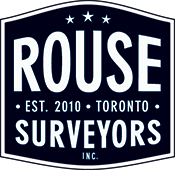
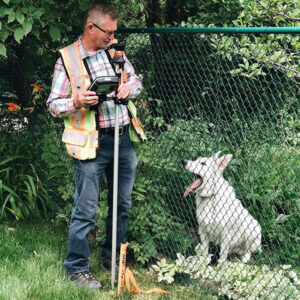
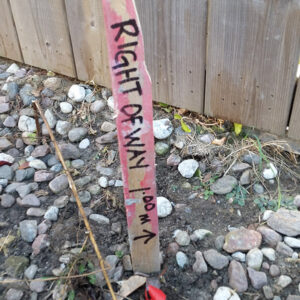
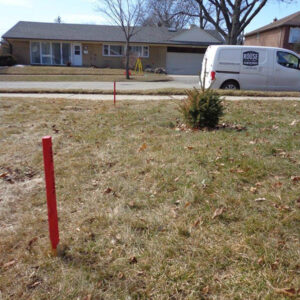
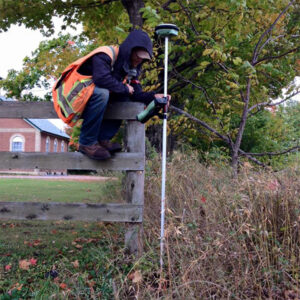
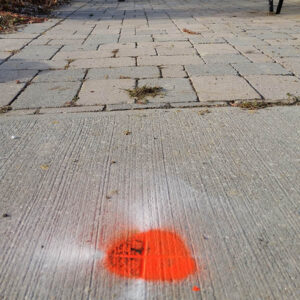

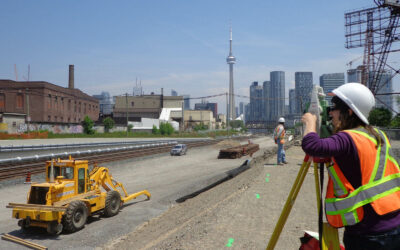

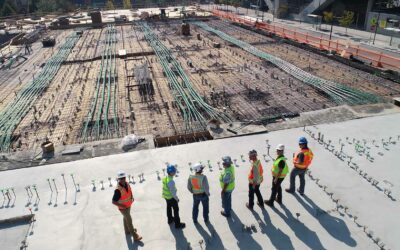
0 Comments